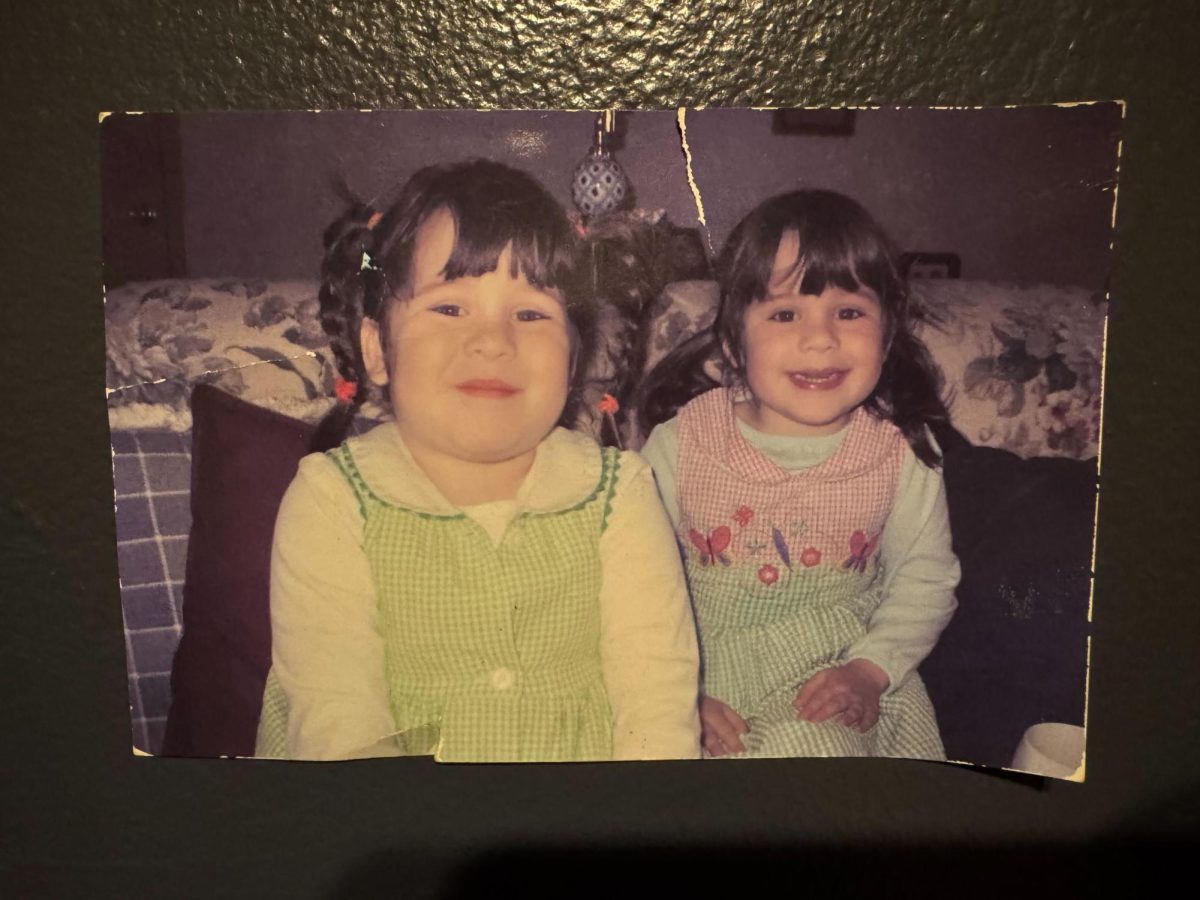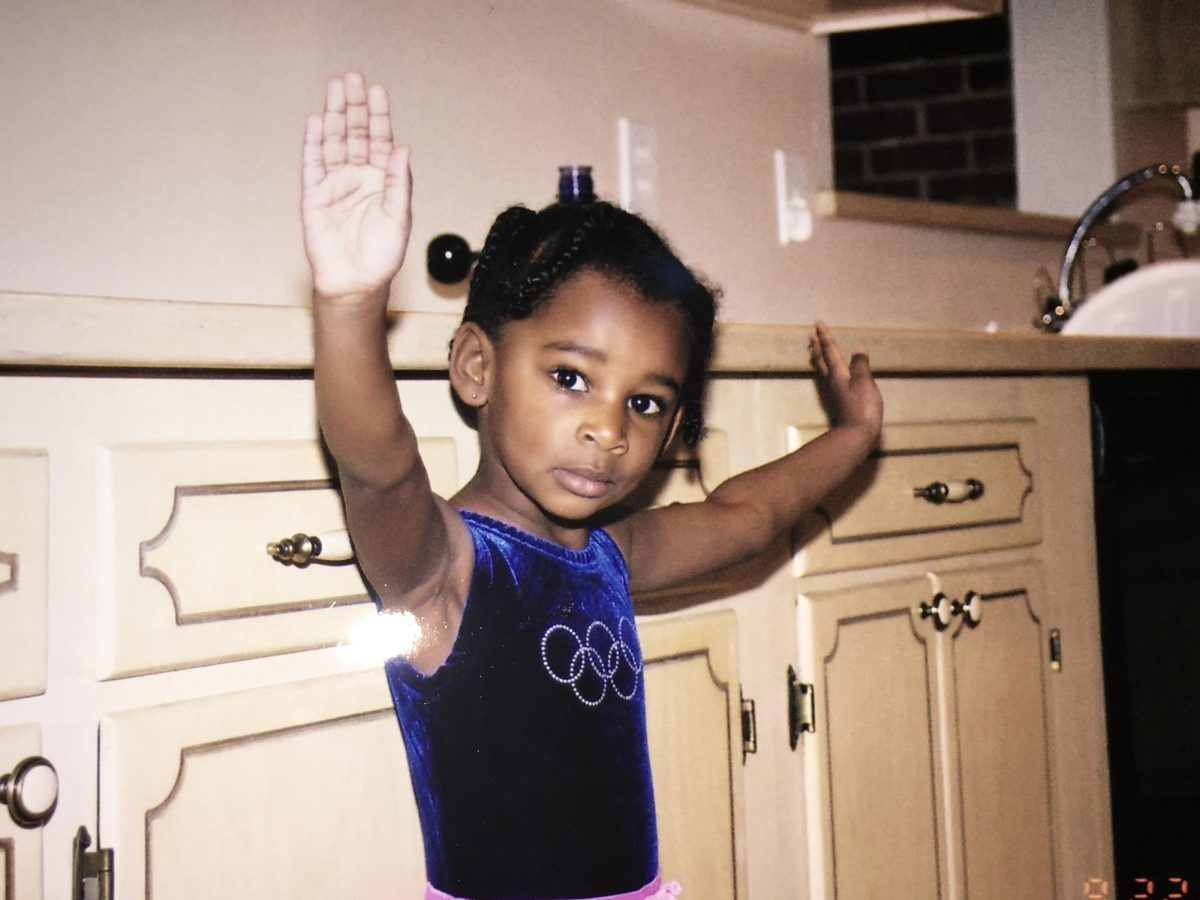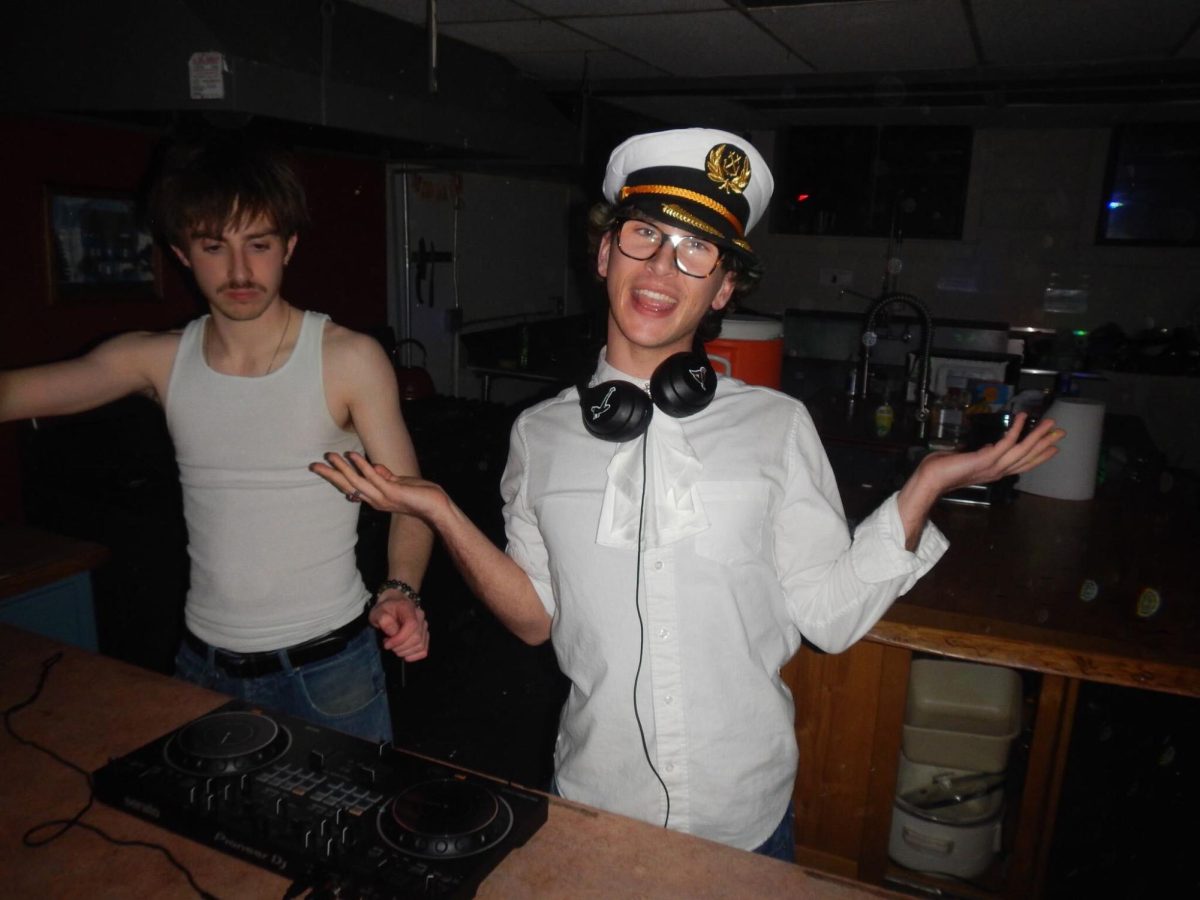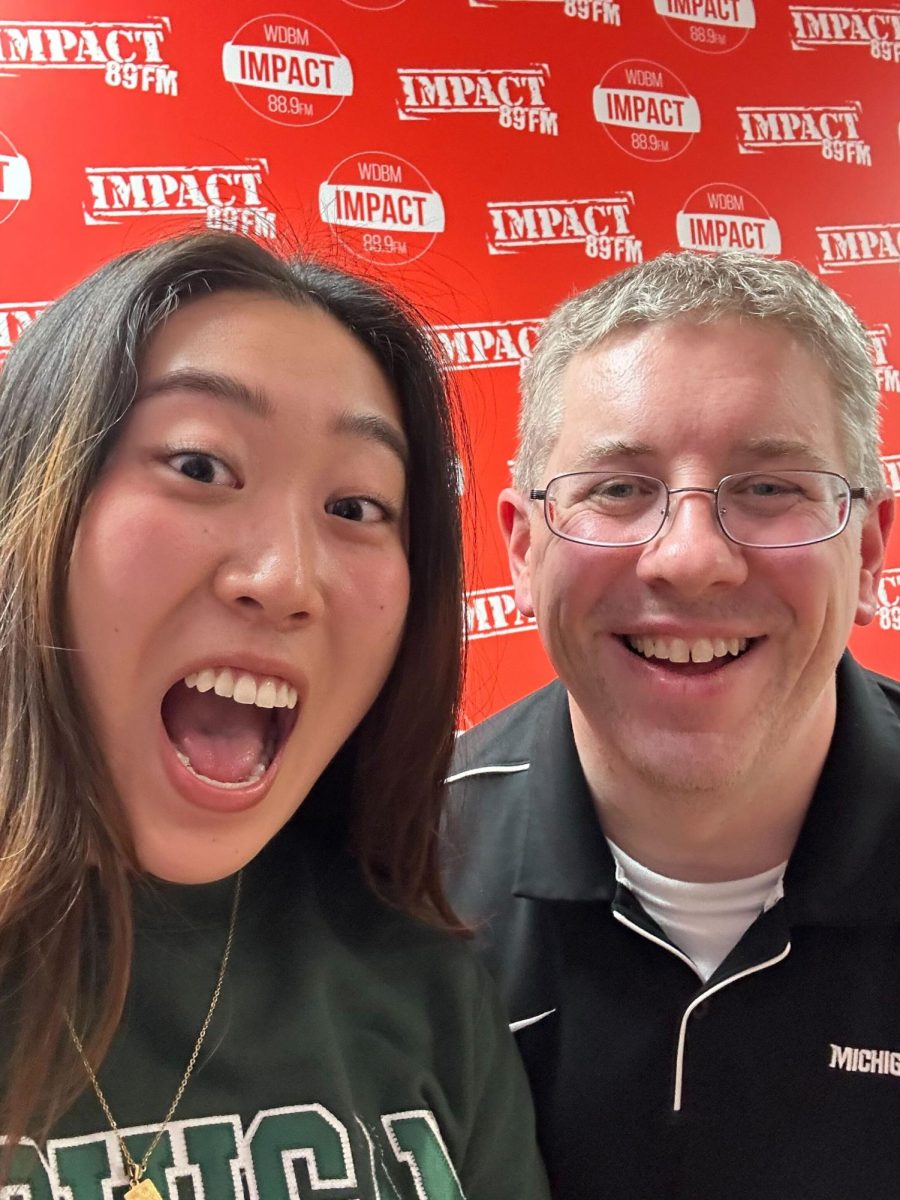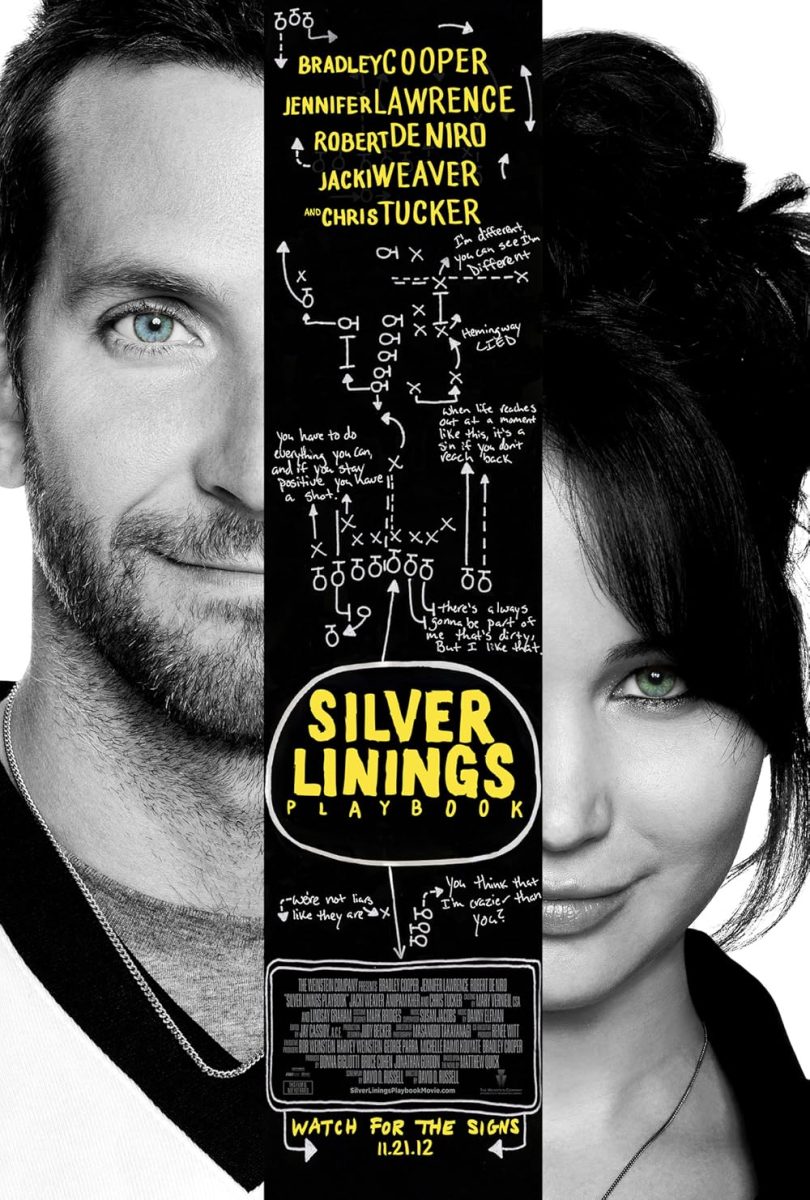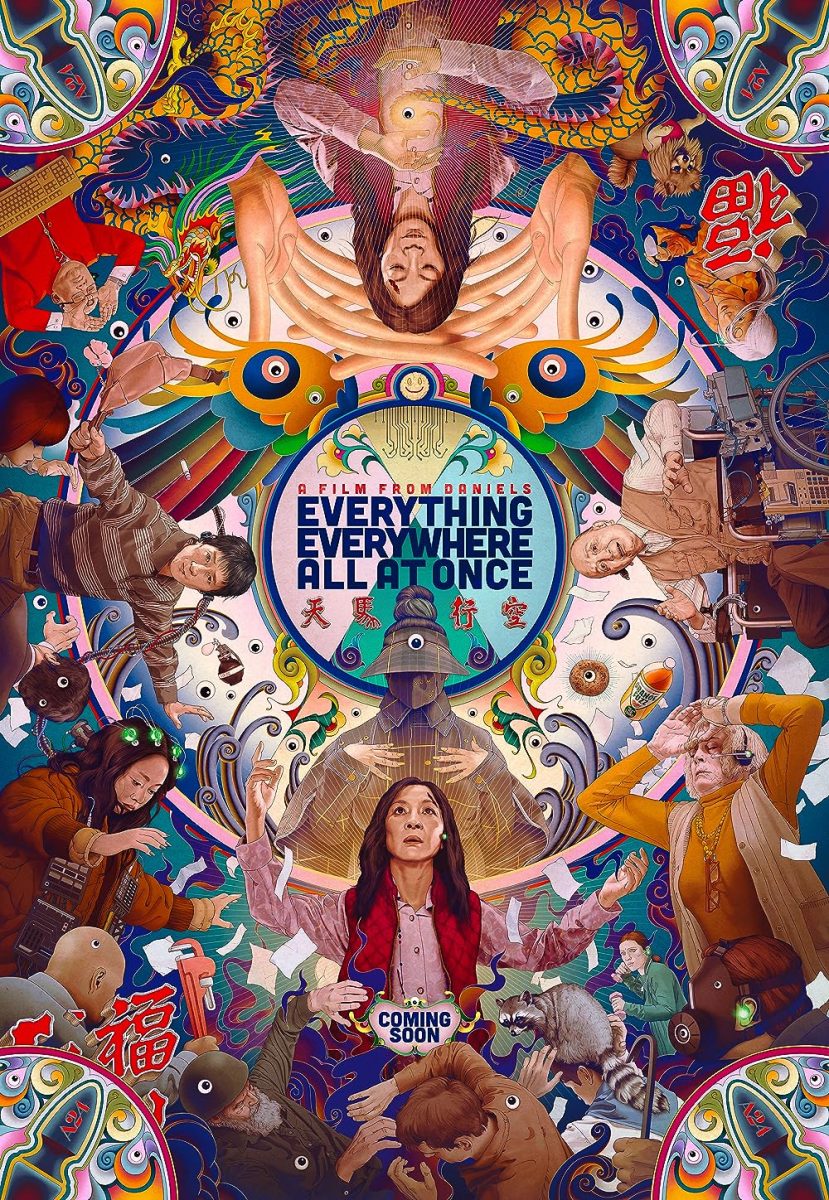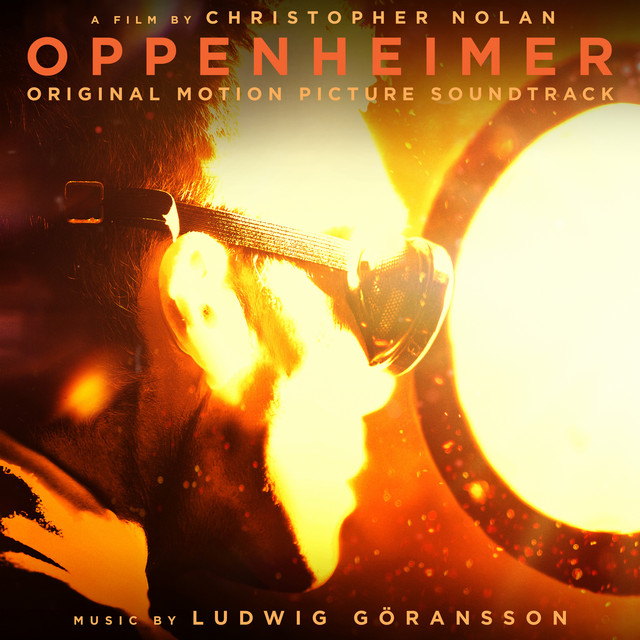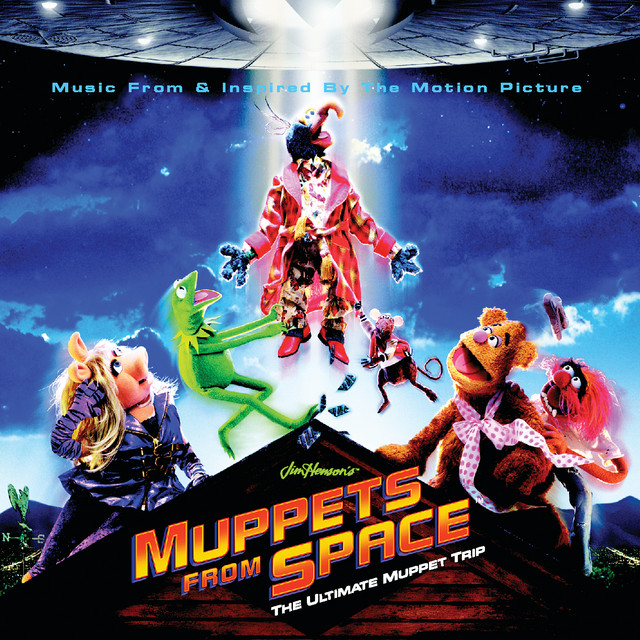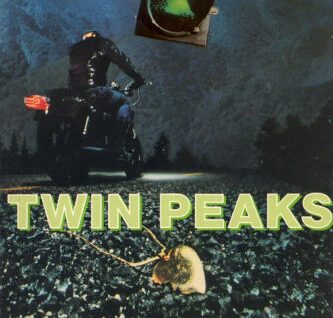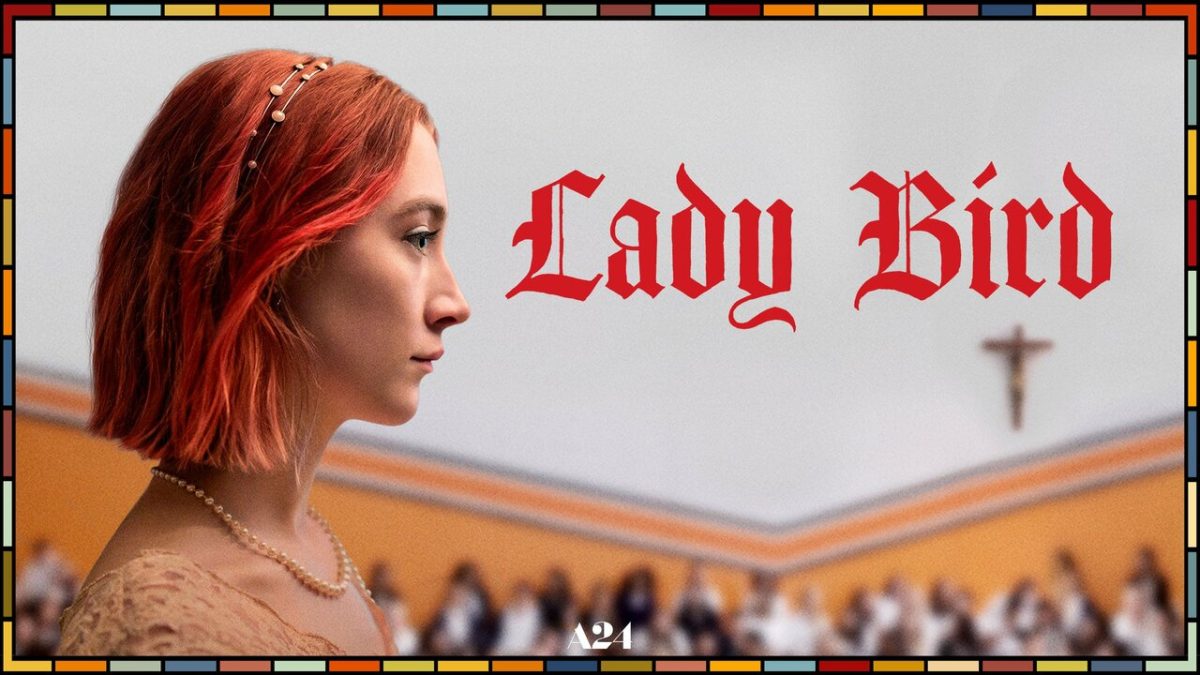I have never loved, but I sure can dream. My journal is filled with mournful ramblings to all the should have beens and could have beens, the margins scribbled with stars. I can’t help but hope; it’s in my nature to slip into the memory of the sun on a cloudy day. When I was younger, my mom used to call this world of mine “La La Land.” “Riya’s in her La La Land,” she’d remark jokingly to my dad or sister whenever I got that glazed over look in my eye. I used to laugh or insist I just didn’t hear her and would go back to tuning out the noise of the present. But in the years since, I’ve chained my dreams to reality. La La Land is a place I save for the quiet of my own presence, in the silence of my scribbles or when I rewatch the film of the same name.
La La Land, written and directed by Damien Chazelle, is a film about loving and losing and the dreams that force us to choose between the two. The film follows Mia and Sebastian, two people lost in their seemingly hopeless aspirations. Mia yearns to be an actress, constantly auditioning for roles she never receives. Sebastian is a struggling jazz musician, forced to muddle his musical spirit with the chipper tunes of the masses. They find each other in the space between dream and reality — both struggling artists trying to make it in a city where their special seems to fade among the millions of others with the same ambitions. The film is not only a love story between two characters but a love letter to Los Angeles and a love song to jazz. The score, written by Justin Hurwitz, captures the soul of Mia and Sebastian so perfectly, La La Land would hardly be a film without it.
The movie starts bright, in the bustling streets of Los Angeles. A strange cacophony of music, voices and honking twist together to create the soundtrack of Los Angeles’ streets. They all fade out to introduce the first skipping notes of Hurwitz’s score, “Another Day of Sun.” In traditional musical form, as if possessed by the tune, every driver on the street exits their vehicle to dance a perfectly rehearsed number atop their cars, and a full band bursts from the back of a moving truck. In all our captivation and disbelief at the visual display, the audience completely overlooks the meaning of the song within the context of the film: foreshadowing.
“I think about that day /
I left him at a Greyhound station /
West of Santa Fé /
We were seventeen, but he was sweet and it was true /
Still I did what I had to do /
‘Cause I just knew.”
“Without a nickel to my name /
Hopped a bus, here I came /
Could be brave or just insane.”
The song is a celebration of dreamers and an acknowledgement to the fact that Mia and Sebastian’s seemingly extraordinary story is one of many. The song expresses in only the first few lines what the entire movie attempts to say: Even in the city of angels, surrounded by brilliant lights and beautiful faces, some things — or people — must be left behind in order to touch the stars.
It is only for a second that we glimpse the first moment of reflection in the film, when Mia is face to face with herself after an audition gone bad. Her emotions are completely transparent in the foggy bathroom mirror. The audience sits with this truth for only a second, before the first sparky notes of the song “Someone in the Crowd” crashes in. Mia’s roommates chatter and twirl around her, matching the chaotic quality of the music. They try to convince Mia to come to a Hollywood party with them, hoping to be “discovered.” Mia refuses again and again, but the cheerful piano is her internal monologue, pushing her to drown her failures in a night of hope. Swaying her way outside alongside her friends, she calls out to “that someone in the crowd!”
The party is just what Mia expected it to be: shallow and unsurprising. The music fizzles to a slower melody when she finally gets a moment away from the crowd. Mia sings to herself in the muffled quiet,
“Somewhere there’s a place where I find who I’m gonna be /
A somewhere that’s just waiting to be found.”
She is scolding with her words but determined in her tone. The flute is hesitant as Mia re-enters the party, eyes downcast, weaving through the couples in slow symphony around her. The tempo slowly escalates, musically magnifying the steady increase of her heart rate. This scene and the music to accompany it introduce the first romantic elements of the film. Mia’s “someone” is just around the corner — literally.
After leaving the party, Mia finds her car has been towed and resorts to walking back to her apartment, frustrated and unfulfilled. We only hear the sharp click click of her heels and the dull rumbling of a far-away vehicle as she walks down the street in the moon-lit dark. Until, the faint notes of a piano illuminate the night, like candles being lit one by one leading Mia to a restaurant. The song “Mia & Sebastian’s Theme” is the spirit of the film. It is ethereal but, somehow, simultaneously a distinctly human tune. It could only be played by the most fervid hands, and it can only be understood by the heaviest beating hearts. And Mia’s heart beats, her every emotion ripples through her body as she pauses in the street, just outside of the restaurant. It is dark, her face only illuminated by red neon lights, but the audience can sense the chills that run through her, head to toe. The song twists around her, beckoning her into the building where the two fated dreamers finally meet.
There is something so universal about the song “Mia & Sebastian’s Theme.” Not only is it meaningful in Mia and Sebastian’s story, but also for the high school sweethearts who lost touch and found each other again. It is for a couple who met by chance in a bustling city. It is for the people who never got to be together, held apart by time and circumstance. The simplicity of the piano is what makes the tune so captivating. You can imagine the musician behind the notes, eyes squeezed tight, their heart in the music. The simple sweet of the melody, leading to a grandiose display of emotion at the finale never fails to leave the audience awestruck and reaching for the replay button. It is a tune one can never get tired of, and we hear it six times in the film all in different variations, circumstances and meanings. It is the song that lies at the very heart of the movie and at the very heart of Mia and Sebastian’s relationship.
The next song starts in street lamp-lit silence. Mia and Sebastian have found themselves again at the same place at the same time — fate tapping them on the shoulder. They walk back to their cars together after attending the same party. Just after Sebastian remarks, “It’s strange we keep running into one another, maybe it means something,” “A Lovely Night” begins to play: The song that starts it all.
The melody has an ever-descending quality to it. The flute and piano, accompanied by the xylophone, twirl around one another creating the sound of falling in love. Mia and Sebastian turn away, standing at the top of a hill, watching the city below. The flute takes its dip downwards, and the audience can only imagine the slow smile forming on the couple’s lips. Mia and Sebastian sing,
“This could never be /
You’re not the type for me (really?) /
And there’s not a spark in sight /
What a waste of a lovely night.”
But the pair’s body movements and the instruments tell a different story. The flute is Mia, slowly falling; the piano is Sebastian, subtly hopeful; and the trumpet is the tension between the two, loud and almost palpable. The scene ends in uncertainty. Although they insisted throughout the song there was nothing between them, they manage to cross paths again when Sebastian appears at the coffee shop Mia works at, and their story continues.
Opening with the steady sprinkling of cymbals comes the song “Herman’s Habit.” The two sit next to one another in the blue light of a jazz bar after Mia proclaims hesitantly to Sebastian that she “hates jazz.” The brassy yelps of the trumpet ring clear in the almost-empty room, seamlessly accompanying the bright enthusiasm in Sebastian’s rant about the “meaning of jazz.”
It is impossible to talk about La La Land without acknowledging the role of jazz within the film. The irony of two white characters being the centerfold to a genre that was born and raised in Louisiana’s black communities is clear and should be noted. Although jazz plays a big part in the film, it is not a movie about jazz; the genre is simply an accessory to Sebastian as a character and only subtly influences the music throughout the film. In fact, “Herman’s Habit” is one of the only times that we hear true unfiltered jazz throughout the entire film. Sebastian explains in rushing detail the conflict and improvisation that lie at the center of jazz.
With all of the charm of actor Ryan Gosling, we overlook the flaws in Sebastian that are quite apparent in this scene. After his admittance to being a wholehearted “jazz purist,” he quite boldly proclaims himself to be the “savior” of the genre. “It’s dying Mia. It’s dying on the vine. And the world says, ‘Let it die. It had its time.’ Well not on my watch,’” he says, fists balled up. Sebastian’s enthusiastic monologue about the truth of jazz, however, isn’t supposed to introduce the genre into the film but rather Sebastian’s passion. The audience recognizes the infectious glint in his eyes as they meet Mia’s — they are one in the same. Something that initially set them apart has ultimately brought them closer together.
The second time we hear “Mia & Sebastian’s Theme” it drifts into the scene as a phantom tune — heard by Mia’s ears alone, in a crowded restaurant seated next to another man as she stands up Sebastian for their date. The piano solo sweeps Mia off her feet; she gets up in a rush and runs out of the restaurant with the music at her tail. The piano escalates, crescendoing into a full orchestral rendition of the song as Mia runs down an empty street for Sebastian. All throughout the film, in all different versions, “Mia & Sebastian’s Theme” is woven into every important moment. It is unrelenting and all-encompassing and wholly them.
After making it to the theater, the two take a drive up to the highest panoramic peak of Los Angeles. Not a sound is heard as Mia and Sebastian explore Griffith’s Observatory. The slight shuffling of feet and murmur of voices are silenced by “Planetarium.” The harp lies at the center of this song, steadily strumming our heartstrings as Mia and Sebastian marvel under the projected stars. The film pairs every slight variation in the music perfectly with the actions on screen: the light touch of a cymbal when they make eye contact, the surprise shout of the trumpet as they kiss for the first time. No words need to be spoken when the music does it for them. Every feeling is personified as they fly past the clouds, quite literally touching the stars, bodies entwined. Mia and Sebastian’s silhouettes purple, dancing among the galaxies as “Planetarium” transforms into another performance of “Mia & Sebastian’s Theme.”
Everything falls into place after that starlit night. “Summer Montage / Madeline” is a jazzy tune and pairs perfectly with the feelings of love that come as they begin their relationship. Mia smiles and skips, arm in arm with Sebastian. He seems to have convinced her of jazz’s greatness. It is in these montaged moments that they are happiest, with Mia writing and preparing for her one woman show and Sebastian riffing a plunky tune at the jazz bar, The Lighthouse. Spirits are high, both in the music and in their hearts. But the pair’s harmony only holds out for so long before they lose beat.
“City Of Stars” plays directly after their second date at The Lighthouse. Sebastian sings the song with hope in his heart as he reflects on the night. But it plays under different circumstances the second time. It is in Sebastian’s true moment of choosing, sitting at the piano in contemplation after practicing with a new jazz band that the song “City Of Stars / May Finally Come True” plays. Sebastian finally shares this tune with Mia and with her airy voice and slight twist of the lyrics, the wish of the song comes true. The performance of this song is the way that Sebastian opens himself up to Mia and seeks her comfort. He sings to distract himself from the divergence of his dreams while Mia sings it to reach them.
“… A look in somebody’s eyes /
To light up the skies /
To open the world and send it reeling /
A voice that says, I’ll be here /
And you’ll be alright.”
Mia sings, with a hopeful glint in her eye. While Sebastian simply submits, claiming he only needs Mia and his dreams. He sings:
“I don’t care if I know /
Just where I will go /
‘Cause all that I need’s this crazy feeling.”
Though they sit together on the narrow piano bench, this is the moment they diverge. The rest of the song continues in a contrasting montage. Mia stands in the quiet spotlight of a local theater where she plans to debut her one woman play, while Sebastian is lit in the bright lights of overflowing concert halls accompanying his new band.
Sebastian’s band becomes the big contention between the two. Their aspirations are what connected them. After watching Sebastian perform and seeing his music fade beneath the flashy and elaborate quality of his band’s music, Mia doesn’t recognize him. The bright white of the stage lights wash him out compared to the yellow hue of the jazz bars he was destined for. Ironically, it is the music of those bars that plays in the background as Sebastian defends his membership in the band. “Surprise” is a jazz tune in every sense of the word. Heavy in horns and piano, the two instruments yelp back and forth. The loud shout of the trumpet and short plunks of the piano interrupt one another, like an argument. Mia, head bent and brows furrowed, questions Sebastian on his sudden disinterest in the jazz club he once wished to start. The argument ends in record static, then silence.
After Sebastian’s admittance to giving up on his dreams, Mia crumbles. Very few people attend her one woman play, and she decides to return to her hometown, all to the tune of “It’s Over / Engagement Party.” The somber melody is paired with visuals of straight-faced Mia driving down empty Idaho roads, hair floating gently in the wind. She drives in supposed silence, but the audience hears the spirit of Sebastian in the heavy notes of the piano, notes that lead Sebastian to Mia’s childhood home. When a casting director comes calling for Mia, he sets his stubbornness over their breakup aside to make her attend.
Mia’s audition is performed in the form of a song. “The Fools Who Dream” tells the story of Mia’s aunt, the very same one who inspired her to pursue acting. The song, at its very core, is about the pain and “foolishness” of those who dare to let themselves aspire to something they may never achieve. It’s an ode to the brave: the actors, the singers, the artists and the musicians who let themselves ache in the name of the things they love. Emma Stone’s voice rings loud and raw in this scene. Every emotion on her face, every imperfection in her tone is true, as this song was sung live on set. The melody ends in skipping piano and Sebastian’s smiling face.
It is five years before they see one another again. Now Mia’s face is plastered on the walls of the city she once wished to leave, and Sebastian stands in the middle of a club he can call his very own. In a moment of chance and utter fate they meet once again to the tune of the very song that brought them together: “Mia & Sebastian’s Theme.” Mia is drawn into a neon-lit club, pulled in by the jaunt of the jazz she used to despise, husband in hand. Mia and Sebastian catch one another’s eye in the crowded club. With a pause and a short introduction, Sebastian sits at the piano and begins to play.
The song starts in solo, one hand delicately pushing the keys of the piano. Hesitantly, the chord enters and the song that rings in the background of the entire film once again envelops the scene. The lights dim; the club empties. It is only the two of them,like the song is the invisible string that connected them all along. The slow beginning is like a warm embrace, and the quick escalating bridge is one last try to get things right. The song tells the story of what might have been for Mia and Sebastian if fate had not had its wicked way. What if they kissed in the jazz bar where they met? What if Mia’s play was phenomenally successful? What if everything worked out in Sebastian’s career and Hollywood became their musical paradise? The choir choruses the tune, and the moment in which they dance in a sea of stars feels almost religious. A piano tune reminiscent of a living-room keyboard plays as Mia and Sebastian raise a family. The song ends with a singular plunking note, a longing glance and a wish for something that never could be.
“Mia & Sebastian’s Theme,” heavily referenced throughout the film, is omnipresent. It follows a story that has been told since the beginning of time. There has never been a world without unrequited lovers or fervorous dreamers. Those very people are sewn into the foundation of humanity. Their stories that leave our hearts most tender. La La Land is a celebration of those very people and the dreams that make their hearts sing. As a dreamer myself, I can’t help but wish and wish, like it is all I am meant for. I see the same lovestruck wonder in Mia and Sebastian’s eyes when I look in the mirror. Although the film ends with the pair apart, it is a story of hope. They remain happy, content in their dreams turned true and content in their loves that helped them get there.






